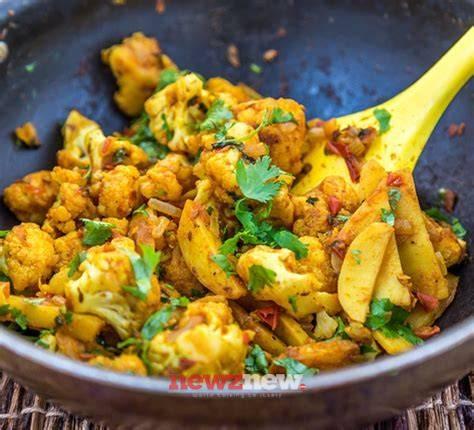Contents
- 1 Understanding the Desi Diet: Deep Roots and Diversity
- 2 Veganism in India: The New Wave
- 3 Desi vs Vegan: What’s the Big Deal?
- 4 Barriers to Adoption
- 5 Modern Solutions: Veganizing Indian Classics
- 6 Is the Switch Possible for Most Indian Households?
- 7 Every Bite Counts
- 8 Desi Diet: Traditional Indian Eating
- 9 Veganism in India: Growth and Momentum
- 10 Desi vs Vegan: Key Challenges
- 11 Why Some Are Switching
- 12 The Economic and Nutritional Equation
- 13 A Slow, Mindful Shift
The question of whether Indian households can truly make the leap from traditional desi cuisine to a vegan lifestyle has become a hot topic in 2025. With rising health consciousness, ethical debates, and sustainability chatter dominating the food sphere,

veganism is gaining notable traction. However, this transition is far from simple, as it challenges generations of culinary heritage, taste preferences, religious beliefs, and readily available ingredients. Let’s explore the complexities, opportunities, and realities facing Indian families as they weigh veganism against time-honored desi diets.
Understanding the Desi Diet: Deep Roots and Diversity
Traditional Indian diets are among the world’s most plant-forward, with legumes, vegetables, grains, and spices forming daily staples in most regions. From dal and rajma to idli and sabzi, these dishes combine flavor and nutrition while minimizing reliance on meat. However, dairy—ghee, paneer, dahi, and cream—is deeply embedded in both routine meals and festive feasts; eggs and occasional meat are also enjoyed by many households.
Veganism in India: The New Wave

Over the last decade, veganism has surged, especially in urban centers and among youth demographics. Surveys suggest nearly 9–13% of Indians now identify as vegan in some form, with rapid growth among people aged 15–34. The vegan food industry in India has blossomed to a $1.44 billion market in 2024, projected to hit $2.5 billion by 2030, reflecting booming demand for dairy and meat substitutes in supermarkets, restaurants, and online platforms.
Desi vs Vegan: What’s the Big Deal?
The biggest challenge for Indian households moving to veganism is swapping out beloved dairy staples. Paneer, curd, and ghee not only enrich flavor profiles but also offer affordable nutrition and culinary versatility. Traditional dishes like palak paneer, kheer, and lassi are hard to replicate precisely with plant-based substitutes; vegan versions demand coconut, nut milks, or tofu, often resulting in higher expenses and a change in taste or texture.
| Aspect | Desi (Vegetarian/Nonveg) | Vegan (Plant-Based) |
|---|---|---|
| Core Ingredients | Dairy, eggs, some meat, legumes | Legumes, veggies, nuts, alt-dairy |
| Nutrient Sources | Dairy (protein, calcium, B12) | Plant proteins, alt-dairy, supplements |
| Affordability/Availability | Widely available; affordable | Improving, often niche/higher-cost |
| Ease of Everyday Cooking | Simple, traditional recipes | Learning curve for substitutes |
| Cultural/Festival Foods | Central to traditions | Adaptations possible, not universal |
The push for vegan diets in Indian households is driven by several factors:
-
Health concerns: Connections between animal product consumption and diabetes, obesity, or heart disease are motivating people to experiment with plant-based nutrition.
-
Ethical and environmental pressures: Awareness of climate change and animal welfare is prompting families to reconsider the impact of everyday food choices.
-
Lactose intolerance: Increasing incidents of lactose intolerance, especially among younger Indians, is promoting dairy alternatives.
Barriers to Adoption
Despite promising trends, veganism faces several hurdles in Indian homes:
-
Deep cultural preference for dairy and dairy-based flavors.
-
Limited local availability and affordability of high-quality vegan products outside major cities.
-
Social resistance and a lack of understanding about vegan nutrition, especially regarding protein, calcium, and B12 supplementation needs.
Modern Solutions: Veganizing Indian Classics
Chefs, influencers, and food brands are helping to make veganism relatable and practical by reinventing familiar dishes with plant-based substitutes:
-
Cashew cheese and tofu as alternatives to paneer, ghee replaced with coconut or vegetable oils, plant-based yogurt and desserts using almond or soy milk.
-
Social media campaigns and recipe sites empower home cooks to experiment and share vegan adaptations, demystifying new ingredients and cooking styles.
Is the Switch Possible for Most Indian Households?
While veganism and plant-based eating are expanding rapidly, a complete transition for every Indian household remains unlikely, at least for now. Vegetarianism—already practiced by over 30% of the population—will continue to dominate for cultural, economic, and practical reasons. However, veganism will likely keep growing among urbanites, young adults, and progressive families for whom ethical, health, or sustainability goals outweigh tradition and convenience.
Every Bite Counts
Switching from desi tradition to vegan living is not a binary choice but a spectrum. Even small changes—from reducing dairy to experimenting with meat alternatives—can have meaningful impacts on family health and the planet. Ultimately, Indian households are finding their own balance between heritage and innovation, making each step toward plant-based eating a win—for themselves and for future generations.Vegan vs Desi – Can Indian Households Really Switch?
The vegan movement is rising in India, but can deeply rooted desi traditions truly embrace a complete plant-based shift? While urban youth and fitness enthusiasts are leading the charge, most households face significant cultural, economic, and practical hurdles that complicate a full transition.
Desi Diet: Traditional Indian Eating

The hallmark of the traditional Indian diet is balance and diversity, with most meals built around staple grains, lentils, vegetables, and crucially, dairy foods like paneer, ghee, and curd. These ingredients have been intimately woven into everyday life and festivals for generations. Regional variations add richness and flavor, but dairy remains a thread connecting north, south, east, and west Indian cuisines.
Veganism in India: Growth and Momentum
The vegan food movement in India is growing, though it remains niche relative to vegetarianism. Surveys indicate that 9% of Indians now identify as vegan, spurred by urban millennials and Gen Z—the majority of whom cite health, ethical, and environmental reasons. India’s vegan market reached $1.44 billion in 2024 and is projected to soar by almost 70% by 2030. Vegan products are available in supermarkets and restaurants across major cities, and digital campaigns are driving awareness.
Desi vs Vegan: Key Challenges
The greatest barrier to household-level vegan adoption lies in the centrality of dairy and eggs in everyday cooking. Classic staples—palak paneer, lassi, kheer, mithai—are cherished for flavor, nutrition, and tradition. Plant-based substitutes like tofu and nut milks exist, but they often cost more or differ in texture and taste, making adaptation difficult for older generations and rural communities.
| Feature | Desi Vegetarian | Vegan |
|---|---|---|
| Staples | Dairy, eggs, legumes | Only plant-based foods |
| Flavors | Deep, rich, creamy | Light, nutty, sometimes bland |
| Traditional value | High | Lower, but growing |
| Cost | Affordable, accessible | Improving, often more costly |
Indian food is rooted in family, celebration, and tradition. Household elders pass down recipes and rituals, with dairy playing a starring role in key festivals, religious offerings, and comfort foods. Vegan adaptations—using coconut milk, cashew cream, or soy products—are gaining acceptance but face resistance in many homes.
Why Some Are Switching
Health awareness, lactose intolerance, climate activism, and concern over animal welfare are inspiring young families to experiment with vegan diets, sometimes raising children fully plant-based. For many, the decision is not just about food but about living a conscious lifestyle, including zero-waste practices and social responsibility.
The Economic and Nutritional Equation
Vegan diets in India offer sustainability and ethical advantages, and plant-based food is readily available—yet achieving nutritional adequacy requires learning, supplementation, and creativity. Vegetarian diets rely on dairy for protein and calcium; vegan diets must source these from legumes, nuts, and fortified foods.
A Slow, Mindful Shift
Indian households are unlikely to make a wholesale transition to veganism overnight, given cultural and practical realities. However, incremental changes—reducing animal product intake, trying vegan versions of classic dishes, and supporting plant-based brands—are increasingly possible, especially for the urban, educated, and health-conscious. For most, the switch is evolutionary, not revolutionary—and that’s perfectly in step with India’s rich culinary history.






